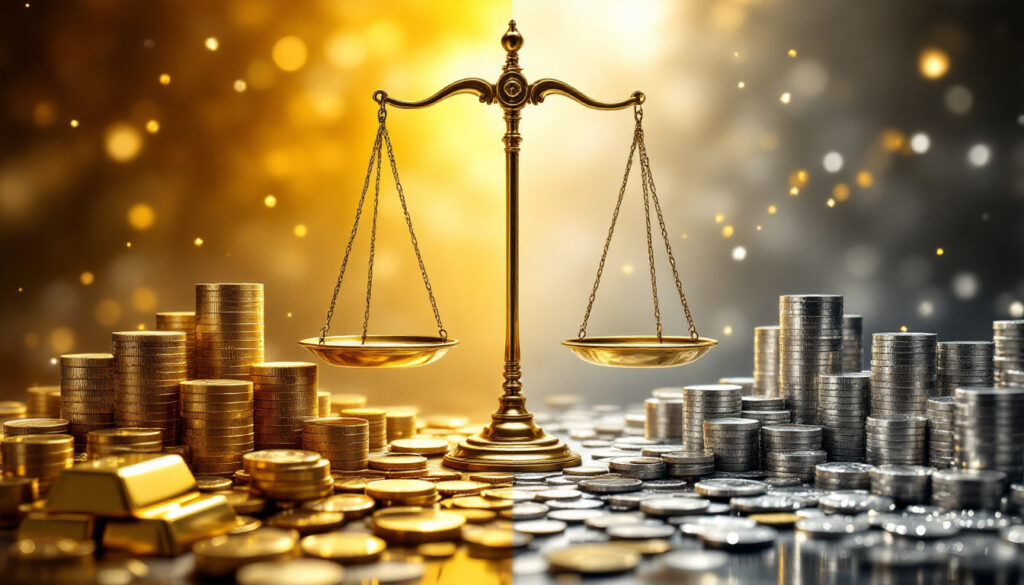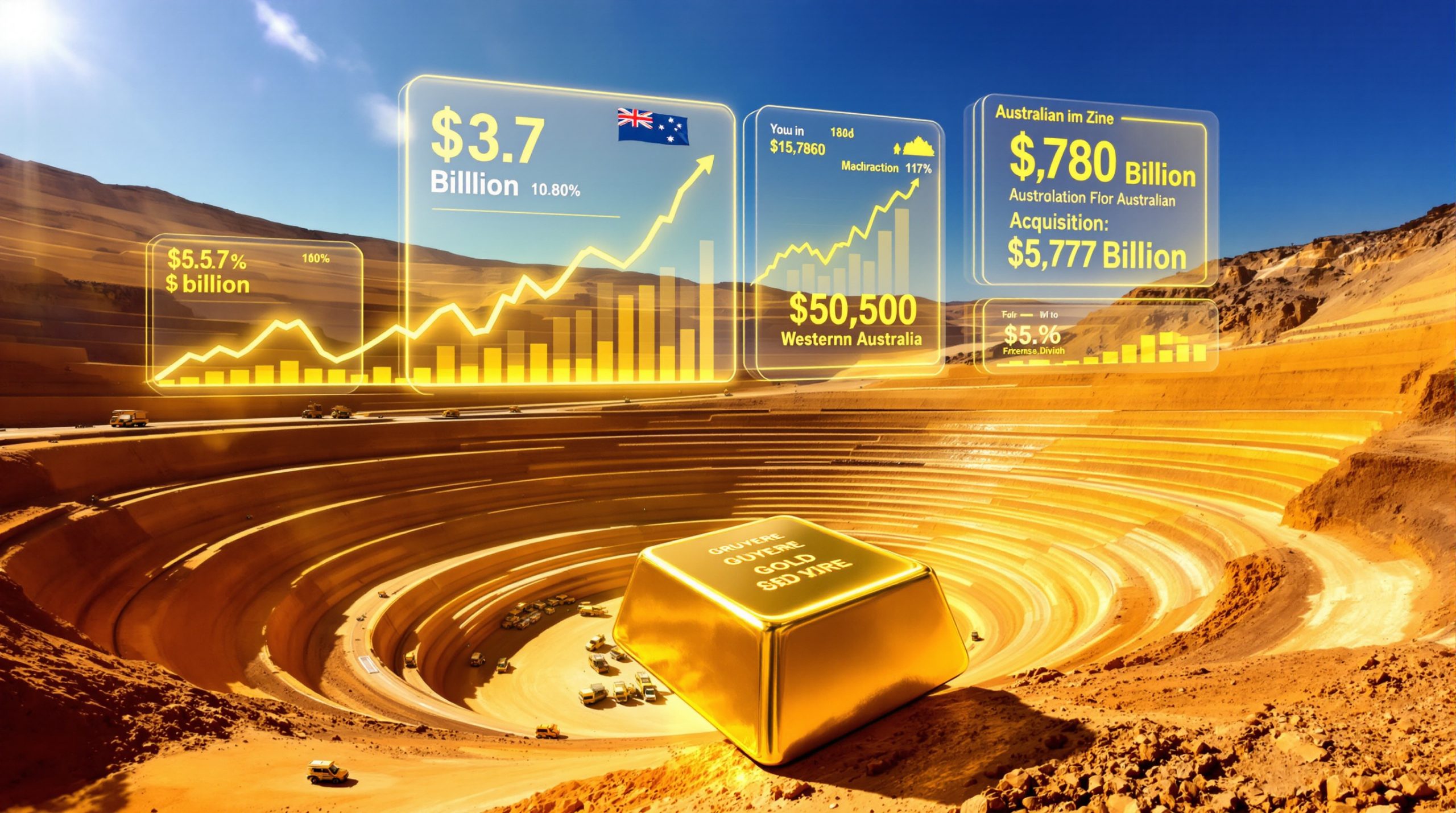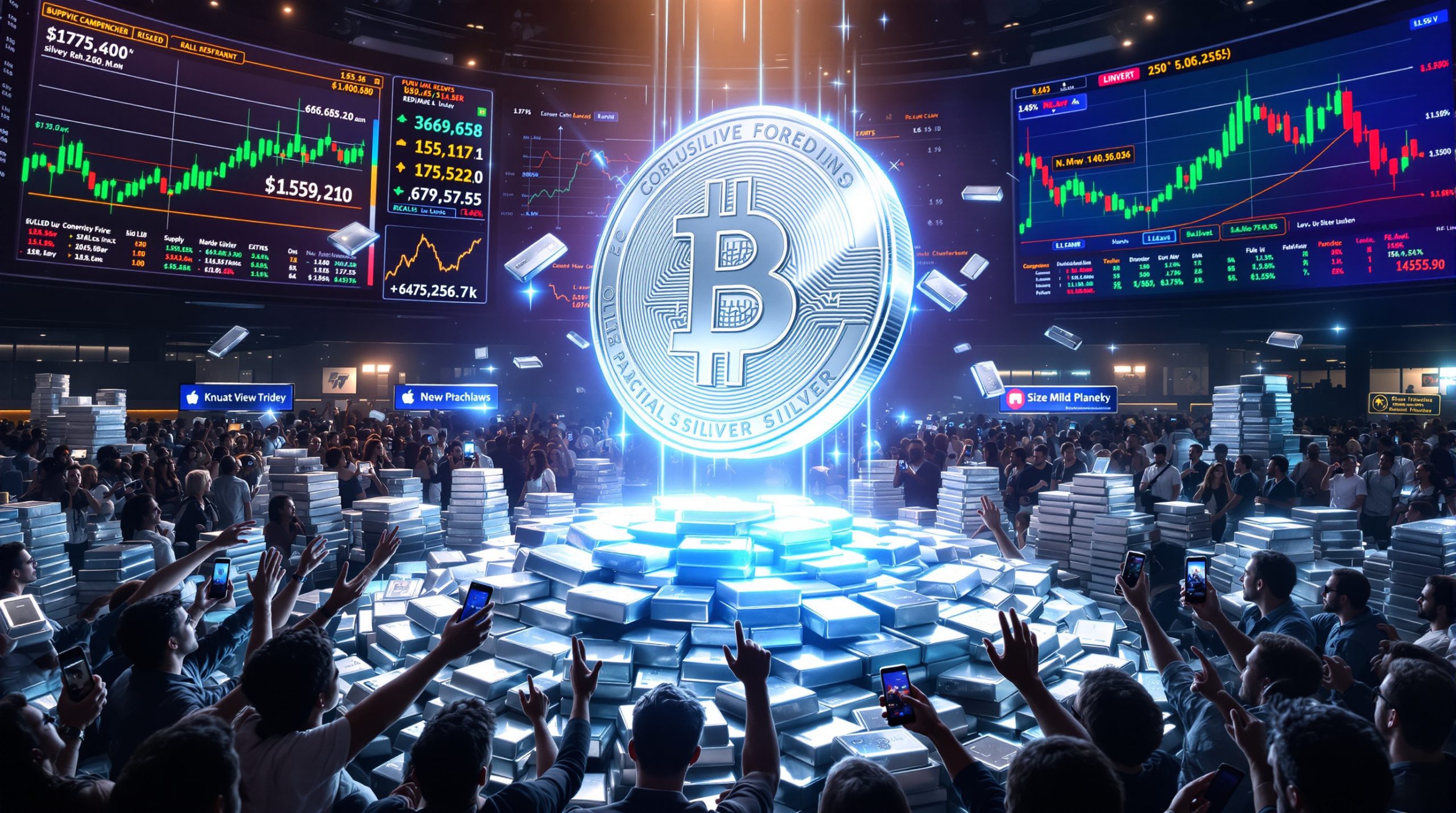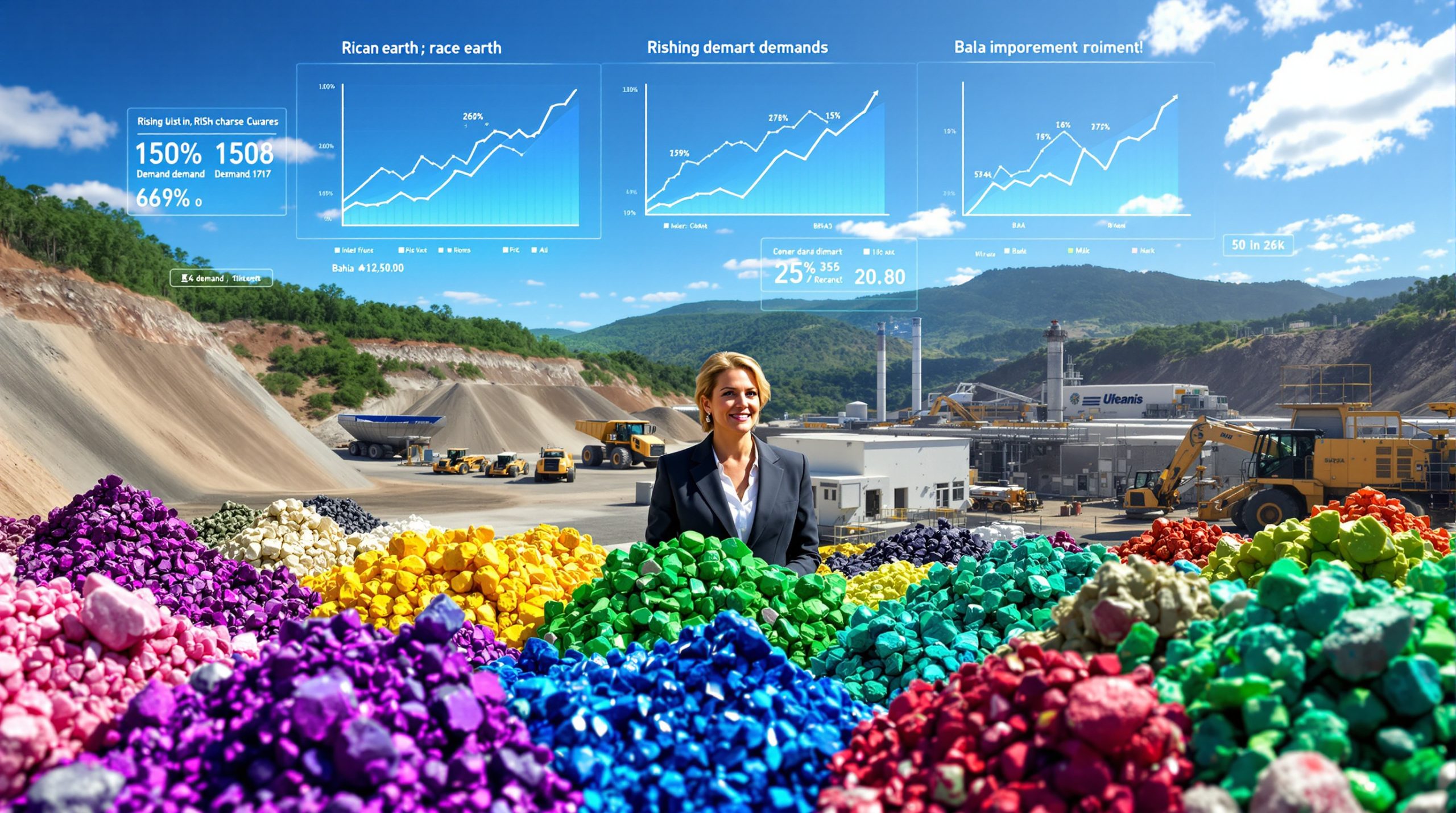Understanding the Widening Gap: Gold and Silver Price Differences Explained
When comparing precious metals, few questions arise as frequently as why gold consistently commands a substantially higher price than silver. This price difference has grown increasingly significant in recent years, leaving many investors wondering about the underlying causes and potential opportunities. Let's explore the complex dynamics behind the gold and silver price difference and what it means for investors.
What Causes the Significant Price Gap Between Gold and Silver?
The dramatic disparity between gold and silver prices represents one of the most intriguing phenomena in precious metals markets. To understand this price gap, we need to examine several fundamental factors.
The Current Gold-to-Silver Ratio Explained
The gold-to-silver ratio (GSR) has reached an astonishing 103.2:1 as of May 2025, with gold trading at approximately $3,400 per ounce while silver hovers just under $33 per ounce. This remarkable price difference means you would need over 103 ounces of silver to purchase just one ounce of gold.
This disparity represents one of the widest gaps in recent history, significantly exceeding historical averages and raising profound questions about market fundamentals and potential market inefficiencies. Recent gold-silver ratio insights suggest this trend may continue through 2025.
Natural Supply Ratio vs. Market Price Ratio
One of the most striking contradictions in the gold and silver price difference lies in the natural occurrence of these metals. Geologically, gold is mined at a ratio of approximately 1:8-1:10 compared to silver. This means that for every ounce of gold extracted from the earth, miners typically produce only 8-10 ounces of silver.
This natural supply ratio creates a puzzling disconnect when compared to the market price ratio of over 100:1. Logic might suggest that if silver is only 8-10 times more abundant than gold, its price should reflect this relative scarcity more closely. The substantial gap between natural occurrence and market valuation indicates that factors beyond simple supply dynamics are heavily influencing prices.
Historical Perspective on Price Disparities
Looking back provides valuable context for understanding today's gold and silver price difference. In 2011, when silver approached $50 per ounce while gold traded below $2,000, the ratio was much closer at approximately 40:1—less than half of today's extreme level.
Current analyst projections suggest gold could reach $4,000 by May 2026, with silver only expected to reach $35, potentially widening the GSR further to an unprecedented 114:1. This forward-looking analysis indicates the divergence may continue before any potential correction occurs, as reflected in recent gold all-time highs analysis.
Why Is Silver Underperforming Compared to Gold?
Despite sharing many characteristics with gold as a precious metal, silver has consistently underperformed its more valuable counterpart. Several theories attempt to explain this persistent gold and silver price difference.
Paper Market Manipulation Factors
The silver market appears particularly vulnerable to price manipulation through paper contracts traded by large financial institutions and hedge funds. Unlike physical silver, these paper contracts rarely result in actual metal delivery, creating a potential disconnect between paper prices and physical reality.
COMEX silver futures contracts control approximately 1.2 billion ounces, far exceeding the annual mine supply of around 800 million ounces. This imbalance potentially allows large traders to influence prices through paper positions without needing to secure physical metal, contributing to the widening gold and silver price difference. Some silver market squeeze analysis points to this imbalance continuing to impact global finance.
Industrial Demand Suppression Theory
A compelling explanation for silver's underperformance relates to its industrial applications. Unlike gold, which is primarily an investment and monetary metal, 55% of silver demand comes from industrial uses compared to less than 10% for gold.
This industrial dependency creates a potential incentive structure for keeping silver prices artificially low. With industrial silver consumption creating consistent deficits for 4-5 consecutive years, there appears to be a disconnect between supply shortages and price performance. This anomaly potentially benefits industrial consumers who require silver as a production input and may have influence in commodity markets.
Investment Psychology Differences
The gold and silver price difference also reflects profound psychological distinctions in how investors perceive these metals. Gold continues to benefit from its perception as the premier safe-haven asset during economic uncertainty, consistently reaching new all-time highs while silver struggles to approach its 2011 peak.
During the 2020 pandemic, for instance, gold surged 25% during COVID-19 lockdowns, while silver gained only 15%. This psychological preference for gold during turbulent economic periods contributes significantly to the widening price gap between the two metals, with many turning to gold safe-haven insights during uncertain times.
How Does Silver Perform as an Inflation Hedge?
Despite its underperformance relative to gold, silver maintains important qualities as a store of value that shouldn't be overlooked when considering the gold and silver price difference.
Silver's Purchasing Power Preservation
Silver has maintained remarkable purchasing power against many everyday goods since 1964 (the last year of 90% silver U.S. coinage). A silver quarter from 1964, now worth approximately $5.75 in melt value, can still purchase a gallon of gasoline in most U.S. locations—a powerful demonstration of silver's effectiveness as an inflation hedge.
This practical example illustrates how even with the growing gold and silver price difference, silver continues to fulfill a fundamental role in preserving wealth against currency devaluation.
Housing and Consumer Goods Comparison
When measured against major purchases like housing, silver has actually gained purchasing power since 1964. Remarkably, 2,500 ounces of silver can buy an average U.S. home in 2025, compared to approximately 5,000 ounces required in 1964—despite modern homes generally being larger and offering more amenities.
This perspective reveals an important nuance in the gold and silver price difference: while silver hasn't kept pace with gold's appreciation, it has nevertheless outperformed official inflation measures for many practical goods and services.
Silver's Practical Value Retention
Silver has maintained or improved its purchasing power relative to food, transportation, and most consumer necessities over the past 60+ years. With a real inflation-adjusted return of approximately 1.2% annualized since 1971 (compared to gold's 3.8%), silver confirms its effectiveness as a store of value despite its underperformance relative to gold.
"Silver maintains purchasing power for essentials but lags behind gold's capital appreciation. This practical preservation of buying power represents a fundamental quality that transcends mere price comparisons."
What Factors Influence Gold's Stronger Performance?
Understanding why gold consistently outperforms silver requires examining several key factors that contribute to the growing gold and silver price difference.
Central Bank Acquisition Trends
Central banks have been aggressively accumulating gold reserves, with record purchases of 1,136 tonnes in 2023 alone. This institutional buying provides consistent support for gold prices that silver doesn't experience to the same degree.
Central banks view gold as a strategic reserve asset that helps diversify away from dollar-denominated holdings. Silver, despite its historical monetary role, has been largely abandoned as a reserve asset by government institutions, creating a significant disparity in institutional demand that contributes to the gold and silver price difference.
Investor Perception During Economic Uncertainty
Gold benefits tremendously from its historical reputation as the ultimate safe haven during periods of economic instability, currency devaluation, and geopolitical tension. This perception creates stronger investment demand during uncertain times, driving prices higher.
Gold's inverse correlation to the U.S. Dollar Index (DXY) stands at approximately -0.6, compared to silver's weaker correlation of -0.4. This stronger negative relationship means gold tends to rise more significantly when the dollar weakens, contributing to its outperformance and the widening gold and silver price difference.
ETF and Investment Vehicle Differences
The infrastructure supporting gold investment dwarfs silver's equivalents. Gold ETFs manage approximately $230 billion in assets compared to silver ETFs' $18 billion as of Q1 2025. This dramatic disparity in investment vehicles creates significantly stronger institutional support for gold prices.
The larger market capitalization and liquidity of gold investment products contribute to price stability and upward momentum, further reinforcing the gold and silver price difference as institutional investors can more easily allocate substantial capital to gold than to silver. For those considering investments, exploring various gold investment strategies can be beneficial.
Should Investors Consider the Gold-Silver Ratio for Portfolio Decisions?
The historically high gold-to-silver ratio presents potential strategic opportunities for investors who understand the cyclical nature of commodity markets and the gold and silver price difference.
Strategic Metal Allocation Considerations
The gold-to-silver ratio has averaged approximately 55:1 since 1970, with readings above 80:1 typically signaling silver undervaluation. The current extreme ratio of over 100:1 may represent a strategic opportunity for investors to consider increasing silver allocation relative to gold.
Historical data suggests a 70% probability of the GSR contracting to below 80:1 within three years of exceeding 90:1. For example, in 2016, the ratio fell from 80:1 to 65:1 in just 12 months as silver outperformed gold by an impressive 35%. According to the historical gold-silver ratio chart, these cyclical patterns have repeated throughout market history.
"Allocating to silver at GSR levels above 100:1 provides asymmetric upside potential for investors willing to accept higher volatility in exchange for possible outperformance."
Physical Ownership Advantages
Physical silver ownership offers benefits beyond potential price appreciation relative to gold. These advantages include:
- No counterparty risk unlike paper investments
- Privacy outside the financial system
- Portfolio diversification with low correlation to traditional assets
- Tangible wealth that can't be digitally compromised
- Divisibility for smaller transactions compared to gold
These characteristics make silver attractive regardless of its price relationship to gold, especially for investors seeking protection against systemic financial risks.
Long-Term Perspective Requirements
Investors intrigued by the gold and silver price difference should maintain realistic expectations and a long-term perspective. While silver has effectively preserved purchasing power, it exhibits higher volatility (beta approximately 1.5 versus gold's 0.8) and should be viewed primarily as wealth preservation rather than growth.
Storage considerations also matter—silver's lower value-to-weight ratio means it requires approximately 100 times more storage space than an equivalent value of gold, creating practical challenges for large allocations.
FAQs About Gold and Silver Price Differences
Why does silver have more price volatility than gold?
Silver's smaller market size makes it more susceptible to price swings caused by changes in investment or industrial demand. With a total market capitalization of approximately $1.5 trillion versus gold's $13 trillion, equivalent dollar flows create larger percentage moves in silver prices.
This volatility represents both risk and opportunity when considering the gold and silver price difference. During bull markets, silver typically outperforms gold on a percentage basis, while during corrections, it tends to fall more dramatically.
Will silver ever reach its previous all-time high?
While silver remains well below its 2011 high of nearly $50 per ounce, fundamental factors including persistent supply deficits and increasing industrial applications suggest potential for higher prices. However, timing remains uncertain due to market manipulation concerns and competing investment alternatives.
Silver's industrial elasticity means a 1% increase in solar panel production boosts silver demand by 0.8%, creating potential catalysts for price appreciation as green energy adoption accelerates. This industrial dependency creates both ceiling and floor effects in the gold and silver price difference.
How does industrial demand affect silver prices?
Silver's dual role as both precious and industrial metal creates unique price dynamics within the gold and silver price difference. Growing applications in electronics, solar panels, and medical devices generate consistent demand, but industrial users may have incentives to keep prices suppressed through market mechanisms.
Unlike gold, silver faces recycling challenges with a recovery rate of approximately 20% compared to gold's 30%, creating potential supply constraints as industrial consumption continues to grow. This fundamental supply-demand imbalance could eventually overcome paper market pressures, potentially narrowing the gold and silver price difference.
What causes the gold-to-silver ratio to fluctuate?
The GSR fluctuates based on a complex interaction of:
- Economic conditions (expansions vs. contractions)
- Investment trends (risk-on vs. risk-off sentiment)
- Industrial demand changes (technological adoption)
- Market manipulation (paper vs. physical markets)
- Central bank policies (affecting gold but not silver)
During economic crises, the ratio often expands as investors prefer gold's stability, while during economic expansion and industrial growth, the ratio may contract as silver's industrial demand increases. Understanding these cycles helps investors navigate the gold and silver price difference strategically. The gold-silver ratio calculator is a useful tool for tracking these fluctuations.
Is silver a good investment at current prices?
Silver's effectiveness as an inflation hedge and its current historically high ratio to gold may present opportunities for long-term investors interested in the gold and silver price difference. However, investment decisions should be based on individual financial goals, risk tolerance, and portfolio diversification needs rather than speculation on future price movements.
For those concerned about economic instability or currency devaluation, silver offers an accessible entry point to precious metals ownership, with greater potential percentage gains than gold if historical ratio patterns reassert themselves.
"Silver should be viewed as insurance first and investment second—its primary value lies in preserving purchasing power during currency debasement while offering potential upside if industrial demand grows or investment flows increase."
The Future of the Gold and Silver Price Relationship
As we look ahead, several factors may influence the gold and silver price difference:
- Green energy transition increasing industrial silver demand
- Central bank diversification continuing to favor gold
- Potential paper market reforms affecting price discovery
- Inflation persistence supporting both metals but potentially favoring silver
- Mining output challenges as ore grades decline globally
While past performance doesn't guarantee future results, the extreme divergence between gold and silver prices may represent a cyclical opportunity for contrarian investors willing to position against the current trend in the gold and silver price difference.
Regardless of short-term price movements, both metals continue to serve their historical role as stores of value outside the banking system—a function that has maintained relevance for thousands of years and shows no signs of diminishing in our increasingly uncertain financial landscape.
Want to Be First to Know About the Next Major Mineral Discovery?
Discovery Alert's proprietary Discovery IQ model instantly flags significant ASX mineral discoveries, empowering investors to capitalise on potentially transformative opportunities before the broader market. Understand why major mineral discoveries can lead to exceptional returns by exploring Discovery Alert's dedicated discoveries page.




